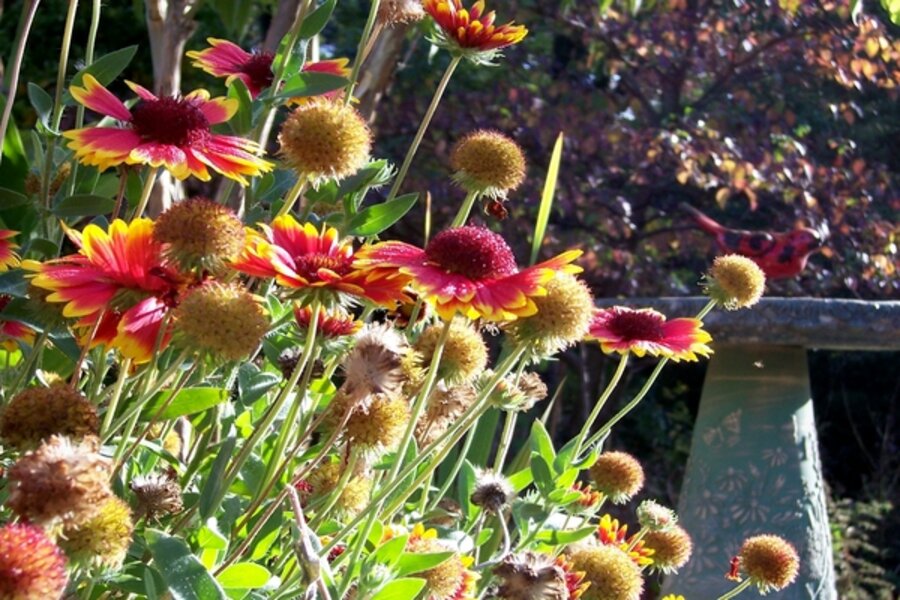Native plants help birds and small wildlife
Loading...
Our small subdivision is surrounded by about 2,000 acres of forest preserve. We’re not quite in the city and not quite in nearby busy suburbs. There’s still a working farm with cows and horses down the gravel road, an unusual feature since we’re about 40 miles from Chicago’s lakefront. An occasional cow gets loose and meanders through the oak, maple, and hickory woods.
These woods are also filled with large stands of non-native honeysuckle, buckthorn, barberry, garlic mustard, and other plants.
Some of these plants hitched a ride with settlers, but many were purchased by homeowners as decorative plants for their gardens.
And some plants, like buckthorn, were sold in northeastern Illinois by John Kennicott’s Nursery and others in the 1850s as an alternative to fencing since buckthorn produces dense thorny branches.
None of these plants were growing in this area a few hundred years ago. There were woods, prairies, and wetlands back then, soon followed by farms and housing developments. Non-native plants compete for space, light, and nutrients with native trees, shrubs, and wildflowers.
Native plants for native insects
Along our road is an 80-foot by 12-foot border filled with perennials, annuals, and shrubs. Although Monarda ‘Cambridge Scarlet’ – a great nectar plant for butterflies and sphinx moths — brightens the border in summer with its brilliant red flowers, I was surprised one day to see swallowtails head for the native monarda (Monarda fistulosa) that grows across the road at the forest’s edge.
And that’s when the light bulb went off. Of course they prefer the pale violet blooms of the native because that is what they have been programmed to seek out for who knows how many hundreds of years – if not thousands. Yes, they sip from Monarda cultivars throughout our garden but this was an eye opener.
And so my goal this year is to revisit what we began some 20 years ago: planting native plants, such as prairie wildflowers — leadwort, pasque flower, meadow anemone, and shooting stars, for example -- and native shrubs, such as chokeberry, elderberry, and viburnum.
Early on, most of those plants were decimated by large herds of deer that stroll through our one-acre garden. As a result, I began adding ornamental plants that they wouldn’t touch — things like Japanese tree lilacs, caryopteris, and non-native ornamental grasses.
Sustain wildlife with native plants
After reading Doug Tallamy’s fascinating book, “Bringing Nature Home: How you can sustain wildlife with native plants,” I’m pondering how I can transform our current garden so that at least half of the plants are natives that originally grew in northeastern Illinois.
Why is that important? Because, as Mr. Tallamy states, our native insects rely on those plants for food, shelter, and a place to grow their offspring. “When native plants disappear, the insects disappear, impoverishing the food source for birds and other animals,” he says.
In turn, those insects make up the food chain that supplies the birds that inhabit our gardens. Ironically, the Japanese beetles that chow down on basil, hibiscus, Japanese weeping cherry tree, and other non-native plants in my garden, are scorned by the birds.
As Tallamy points out, local birds didn’t evolve with Japanese beetles and therefore won’t eat them. The beetles are essentially useless in the food chain except for the occasional praying mantises that catch them.
The choice of native versus ornamental plant is a struggle for gardeners who will soon be visiting local garden centers, buoyed after a long winter and looking forward to buying anything that’s flowering. There is a way to have the best of both worlds if we design gardens to include both.
The butterflies and hummingbirds in our garden also use non-native parsley, buddleia, fennel, and other plants for nectar and for their eggs. As I redesign and rearrange my borders, I’ll make sure to add other natives as well — woodland asters, columbine, paw paw trees, and many others. There are plenty to choose from. And, a new line of native perennials, marketed under the name American Beauties, can help fill both the need for ornamentals and natives.
-----
Nina Koziol gardens on a deer-infested acre southwest of Chicago where her beds and borders are designed for butterflies, hummingbirds and other wildlife. She teaches at the Chicago Botanic Garden and the Morton Arboretum. Find out more on her website, This Garden Cooks. Read Nina's previous posts here at Diggin' It by clicking here.





